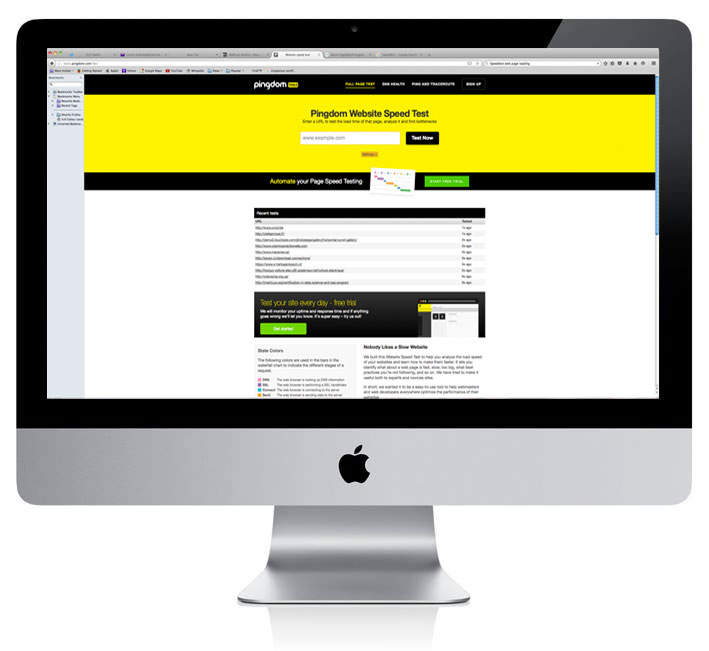
28 Apr Improve your website page load times
No matter what type of platform your website is built on, the principles of web design remains the same. Your website should appeal to YOUR target audience. Although, we would also add a proviso to this – how mobile-friendly your website is will greatly affect your website’s rankings in Google.
So since April 2015, Google has made it clear that it wants website’s to provide a great user experience across devices and platforms.
If you are designing a website, aim to make that site clear and FAST by making these very minor changes to your design you could really improve your users’ experience (UX) and your Google rankings. Plus, it doesn’t matter whether your website is built with WordPress, Joomla, Square Space or Drupal, you can still make these adjustments to improve your page load times, UX and organic search engine rankings.
Loading times are now considered as an important factor in search engine rankings. This fact was born out by Google’s Matt Cutts’ statement “PageSpeed becomes significant for rankings” If Google’s representative says this then you know it is something you need to address!
Plus, it makes total sense when you think mobile searches now outnumber computer searches. It’s really important when viewing a website on a mobile that it loads fast and views correctly.
So, how can you increase the potential of your website with faster loading times? We’ve put together a few steps that anyone with a reasonable amount of web savviness can try.
1. Place your most important information ‘above the fold’
We suggest this to be:
• Your company logo
• Address
• Telephone number
• Your call to action.
Visitors to your website want to know ‘am I in the right place?’ and ‘what should I do next?’.
To clarify what we mean by ‘above the fold’ you may have also seen this term as ‘above the scroll’. Both terms mean the same and relate to the portion of your website that is visible without having to use the scroll bar.
2. Optimise your Images
Make sure you upload images that are the right size. If you scale an image down using CSS, user’s browsers will still load that image at it’s original size. Images can take up a huge amount of bandwidth, not only should you upload them at the correct size, you should aim to compress them. There are some great plugins that will do this automatically for you, in some cases it can reduce an image by up to 80%!
3. Compression
Did you know it’s possible to compress the whole of your website by 50%? Think of how quick this could enable your pages to load. Compression is a server setting and as such will be different depending on your set up. In this instance, we would advise speaking to your hosting company for their advice on this subject. They will be able to tell you where the setting is and how to do it. We would recommend you back up your website first.
4. Delete the junk
Plugins, CSS and images all take time to load so if there are elements you are not using on your website delete them. (We would recommend you back up your website first).
Delete unused plugins from WordPress sites, having them inactive is not enough. Whilst plug ins are very useful they also clutter up your space so the rule is if you’re not using it, delete it.
With regards to optimising your CSS, you do really need to be sure you know what you are doing here. But, there is probably a huge amount of CSS that is doing nothing but taking up space. If you are unclear in this area leave it to the professionals. There are lots of companies out there who can do this for you. Alternatively, you can try using a tool like CSS Compressor and for WordPress try plug ins like Minify or WP Optimise.
5. WordPress Ping backs and trackbacks
Turn them off!
Pingbacks and trackbacks are enabled by default in WordPress. Not only do they take up unwanted bandwidth they clog up your database and invite unwanted requests. Simply turn them off when you create a new post or page.
6. How good is your hosting company?
Not all hosting companies are equal. It is very surprising the difference between a fast web host and an average one. This in turn can have a huge impact on the speed of your website. We would recommend you double check your web hosting compared to other companies. You could increase your website loading times by simply doing a bit of homework. It also might be as simple as upgrading your hosting plan with your current provider.
To check to see if any of the above work, first try measuring your website load speeds with Google’s PageSpeed Insights or Pingdom. These tools with give you something to measure your changes against.
We would love to know if any of these have helped you and good luck.

